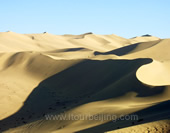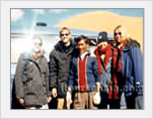
The Silk Road Travel guide
-Travel to Silk Road Put Silk Road on your travel list, you will find a totally different experience in China. The Silk Road is a collection of several ancient trade routes that linked Roman Empire in the west with the imperial court of China in the East. Before the discovery of the sea route to India, the Silk Road was the most important connection between the Orient and the West which still remains its charm to people. The routes played a vital role in the development of the great civilizations of China and other nearby countries, and helped shape the foundations for the modern world. When you are planning to travel there, a guide to the history of the Silk Road is needed, which will make your understanding of its culture and significants deeper.
Put Silk Road on your travel list, you will find a totally different experience in China. The Silk Road is a collection of several ancient trade routes that linked Roman Empire in the west with the imperial court of China in the East. Before the discovery of the sea route to India, the Silk Road was the most important connection between the Orient and the West which still remains its charm to people. The routes played a vital role in the development of the great civilizations of China and other nearby countries, and helped shape the foundations for the modern world. When you are planning to travel there, a guide to the history of the Silk Road is needed, which will make your understanding of its culture and significants deeper.
 The ancient route started at Luoyang and Xi'an, the capitals of Tang Dynasty, reached the Yellow River at Lanzhou, then skirted westward through the Hexi Corridor along with deserts and mountains before reach the oasis of Dunhuang, finally headed to Xinjiang crossing Turpan, Hotan, Yarkand, and Kashgar. Walking through Xinjiang, brave ancient merchants and traveler could go eastward continuously until they arrive at Rome. For hundreds of years the dusty caravan roads were traveled by merchants: silk was carried westward, while wool, gold, silver exotic birds and animals were carried eastward.
The ancient route started at Luoyang and Xi'an, the capitals of Tang Dynasty, reached the Yellow River at Lanzhou, then skirted westward through the Hexi Corridor along with deserts and mountains before reach the oasis of Dunhuang, finally headed to Xinjiang crossing Turpan, Hotan, Yarkand, and Kashgar. Walking through Xinjiang, brave ancient merchants and traveler could go eastward continuously until they arrive at Rome. For hundreds of years the dusty caravan roads were traveled by merchants: silk was carried westward, while wool, gold, silver exotic birds and animals were carried eastward.
With the fall of Rome, the route became unsafe. The Silk Road experienced its last great era during the period of Mongols (Yuan dynasty of China), when the entire route from China to the Mediterranean was part of one empire. At that time, Nicolo and Marco Polo traveled from Kashgar to the Far East along the southern route. The overland link quickly lost its importance as trade across the seas developed. Today, Silk Road has lost its oringinal function, but become a popular destination for many adventurous travellers following in the footsteps of Marco Polo. What are you waiting for? Come and travel along the Silk Road to enjoy the the historical culture relics, beautiful scenery, and the wonderful treatment of visitors and the tradition of Muslim hospitality.
The Silk Road Guide - Attractions
- Xinjiang MuseumThe Xinjiang Uygur Autonomous Region Museum, located in Xibei Road downtown Urumqi, is the collection and research center of culture relics in Xinjiang. The Xinjiang Museum is a provincial comprehensive historical museum in China,...
- Heavenly LakeThe Heavenly Lake, known as Tian Chi in Chinese, is located on the northern side of Bogda Peak in Tianshan Mountains, over 40 kilometers southeast to the city of Fukang, 110 kilometers away from Urumqi. Until 1783 it got the prese...
- Tianshan MountainThe Tianshan Mountains is a large mountain range in the eastern region of Central Asia, which is mainly in Xinjiang, China. The Tianshan Mountains runs through the middle of Xinjiang in China and its end stretches into the western...
- The Khazak YurtsThe Khazak Yurts, literally referred as domes in Khazak, are known as Pearls on the Prairie in the Xinjiang. The Khazak Yurts is not only easy to carry with but also sturdy and durable. The Khazak Yurts have lots of advantages whi...
- The Erdaoqiao Bazaar of UrumqiErdaoqiao Bazaar, together with Shanxi Alley area in Urumqi has been the trading center for the people from southern and northern minority area, as well as West Asia and Central Asia, from the late Qing Dynasty. Going throuhg more...
- The Southern PastureThe Southern Pasture is located in the Nanshan Natural Scenic Area which is a few hours bus ride from Urumqi. The Southern Pasture is more than 60 kilometers away from the Urumqi and consisis of ten east-west valley of all size. T...
- Abakh Khoja Tomb of KashgarAbakh Khoja Tomb of Kashgar is located 5 kilometers east to Kashgar ans is a key cultural relic preserve in Xinjiang Uygur Autonomous Region. The Abakh Khoja Tomb of Kashgar is a typical ancient Islamic complex and the cemetery of...
- Id Kah Mosque of KashgarThe Id Kah Mosque, a place of praying and celebrating in festivals, is located in the west of the Id Kah Square of Kashgar in Xinjiang Uygur Autonomous Region. The Id Kah Mosque covers an area of 16,800 square meters, with 140 met...
- Karakuri LakeThe Karakuri Lake is located at the foot of the Muztagata Mountain, widely acclaimed as the Father of Glaciers. With a distance of 191 kilometers to Kashgar, the Karakuri Lake is 3,600 meters above sea level and has a total area o...
- Thousand Buddha CaveThe Bizaklik Caves were created during the ancient Huihu State and the inscriptions in the caves are written in Uigar, Chinese and other languages. There are several caves that have hundreds of murals; however, the murals have bee...
- Flaming HillIn the best-known Chinese novel "Journey to the West", the Flaming Hill in the novel is the mountain fill with different evil characters who fight with the high monk Tang and his three disciples. Well, it dose exist in the reality...
- The Ancient City of GaochangThe Ancient City of Gaochang is located near the Flaming Mountains and southeast of Turpan. The city was constructed in the first century B.C. and was first called Gaochangbi. However, during the 14th century, the city was burned ...
- The Karez WellThe Karez Well is the most important travel site when you come to visit Xinjiang. The underground canals of Karez are over 2,000 years old. This irrigation system spread to Middle Asia and Persia after first appearing in the Han D...
- The Emin MinaretThe Emin Minaret is a well-known travel site in Xinjiang District. It is the largest ancient tower in Xinjiang and the only Islamic tower. The minaret, located east of Turpan, was built in 1777 by Emin Khoja, a leader of the Uigur...
- The Grape ValleyThe Grape Valley is located northeast of Turpan. It is a must-go travel site in Xinjiang. The valley is a forest of grape vines that veer off a cliff to the west. The slopes of the valley are also home to several cottages and adob...
- The Astana Tombs The Astana tombs, located just south of the Gaochang Ruins, are where the ancient people of Gaochang city are buried (from the Western Jin to Tang Dynasty) and the site houses over 500. The tombs are famous travel sites in China f...
- Tianshui MaijishanMaijishan, located on the northern side of the Qinling Mountain Range and at a height of 1742m above sea level, gets it's name from its giant, haystack-like shape. It is a famous travel site along the Silk Road. The mountain's fam...
- Kashgar Old TownLocated in Artux, on the Gobi desert, 30 kilometers from downtown Kashgar, Xinjiang Uygur Autonomous Region, Kashgar Old Town is an oasis city. It is in Kashgar that Uyghur People account for up to 90 percent of the populati...
The Silk Road Travel Tips
Your Question & Quick Answer*We welcome and appreciate your questions & reviews
User Comments
China Travel Guide
Booking Procedures | Terms & Conditions | Payment Methods | Links | Site Map | About Us | Contact Us | Travel Agent
Copyright 2008, All rights reserved.. itourbeijing.com professional China travel agency and China travel service
TEL: 86-10-85711972 (Universal) 1-888-288-9328 (North America) E-mail: contact@itourbeijng.com
China Travel | Beijing Travel | Shanghai Travel | Xi'an Travel | Guilin Travel |The Great Wall Travel
China Golf | Beijing Golf | Shanghai Golf | Xiamen Golf | Beijing Map | Beijing Side Trip | Yangtze Cruise | Travel Picture



